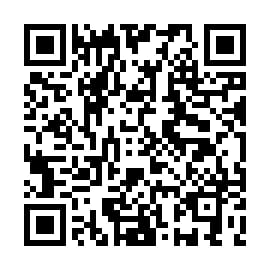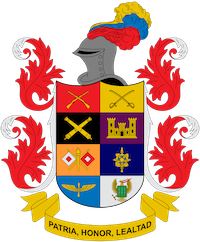The use of asymmetric warfare against Israel and its impact on the strategic revision of the national security doctrine
Abstract
Understanding a military campaign and the degreeto which military strategists manage to materialize the link between the tactical use of forces and strategic objectives, under the parameters of the operational art, the operations Fair Reward and Cast Lead will be analized, undertaken by the Forces lsraeli Defense Forces (IDF) to confront Hezbollah in southern Lebanon; And Hamas, in the Gaza Strip, in 2006 and 2009, respectively. The importance of these operations, much more related to the lessons learned at the tactical level, gained greater visibility by demonstrating to those who made political decisions the urgency of updating the lsraeli national security doctrine which, in 19731 was framed in a logic of Conventional War, with serious limitations to cover actions that could face an asymmetric threat. In light of these events, the national security doctrine of 2010 was born to frame ali those determinations that validate the operational framework of the Armed Forces, in order to ad van ce towards the consolidation of its strategic objectives, both inside and outside the operations field.
Downloads
References
Amos, O. (2002, abril 3). Crisis en el Medio Oriente. Dos guerras palestino-israelíes. El País Internacional. Recuperado de: http://elpais.com/diario/2002/04/03/internacional/1017784805_850215.html.
Anzit, R. (2007). Los servicios de inteligencia israelíes en el contexto de la guerra del Líbano y su objetivo 'Hezbollah'. Estudios Internacionales 29, 1-17.
Ballaz, X., & Folch, M. (2005). Virtualización y actualizaciones del Estado-guerra. Athenea Digital Universitat Autónoma de Barcelona, 1-21. https://doi.org/10.5565/rev/athenead/v1n7.200
Byman, D. (2011). What Israel Can Teach the World and What the World Can Teach Israel. En: A High Price: The Triumphs and Failures of lsraeli Counterterrorism, pp. 32-53. Washington DC: Oxford University Press. https://doi.org/10.1093/acprof:osobl/9780195391824.003.0026
Casais, K. (2008). lsrael's Wars in Lebanon, 1982-2006: An Ends/Means Mismatch. Washington: United States Marine Corps.
Colom, G. (2011). Los límites del Paradigma Estratégico Israelí. Unisci Discussion Papers, 59-73.
Dayan, U. (2007). lsrael's Deterrence after the Second Lebanon War. Jerusalem Center for Public Affairs, 6(19), 82-86.
Dayan, U. (2007). lsrael's Deterrence after the Second Lebanon War. Jerusalem Center for Public Affairs, 82-86.
Eiland, G. (2009). Operation Cast Lead: The Diplomatic Dimension. Strategic Assessment, 7-12.
Geonaga, A. (2007). Hezbolá, ¿una amenaza para el sistema consociacional libanés? Revista de Estudios Internacionales Mediterráneos, 23-30.
Girten, J. (2010). Repository Library Georgetown. Recuperado el 8 de mayo de 2016 de: lsraeli-lranian Relations: Conditions for Change and the Reflection of Relations in Rhetoric: https://repository.library.georgetown.edu/bitstream/handle/10822/553497/girtenJordana.pdf?sequence=1
Gloffka, A. (2012). Relaciones entre el conflicto en Oriente próximo y las decisiones concernientes a la seguridad internacional y alianzas estratégicas. Memorial del Ejército de Chile 488, 5 - 24.
Golov, A., Vishkin, O., & Michaelis, R. (2010). A National Security Doctrine for Israel. IDC Herzliya.
Greenpeace. (2006). Informe Bombas de Racimo: la lluvia de acero. Vancouver: Coalition on Cluster Munitions.
Guzansky, Y., & Kulick, A. (2010). The Failed State: Ramifications for lsrael's Strategic Environment. Strategic Assessment, 13(2), 39-54.
Headquarters United States Marine Corps. (1997). Campaigning. Headquarters United States Marine Corps: Department of the Navy.
Lambakis, S. (2004). Reconsidering Asymmetric Warfare. Joint Force Quarterly 36, 102-108. https://doi.org/10.21236/ADA430420
Levitt, M. (2006). Hamás: Politics, Charity, and Terrorism in the Service of Jihad. Washington: The Washington lnstitute for Near East Policy.
Massot, V. (2006). La guerra de Israel y el Hezbollah. Agenda Internacional, 3(10), 120-123.
Metz, S. (2002). Asimetría Estratégica. Military Review, 64-73.
Ministerio de Defensa de España. (2002). lsrael: Fuerzas Armadas y Conflictos Bélicos. Madrid: Centro Superior de Estudios de la Defensa Nacional.
Nakhleh, H. (2007). The 2006 lsraeli War on Lebanon: Analysis and Strategic lmplications. Pennsylvania: U.S. Army War College.
Qarmout, T., & Béland, D. (2012). The Politics of lnternational Aid to the Gaza Strip. Journal of Palestine Studies, 32-47. https://doi.org/10.1525/jps.2012.XLI.4.32
Raska, M., & Stonaker, M. (2011). Searching for New Strategies: Change and Continuity in lsrael's Security. Conferencia en National University of Singapore. Singapore.
Ruiz, J. (2010). Las Fuerzas de Defensa israelíes: historia y lecciones aprendidas en los últimos conflictos. Fuerzas de Defensa y Seguridad, 384, 1-11.
Shabtai, S. (2010). lsrael's National Security Concept: New Basic Terms in the Military- Security. Strategic Assessment, 13(2), 7-18.
Sharaby, L. (2002). lsrael's Economic growth: Success without Security. Middle East Review of lnternational AjfairsJournal, 6(3), 1-6.
Weitz, Y. (2001). Taking Leave of the 'Founding Father' Ben-Gurion's Resignation as Prime Minister in 1963. Middle Eastern Studies, 37(2), 131-152. https://doi.org/10.1080/714004392













